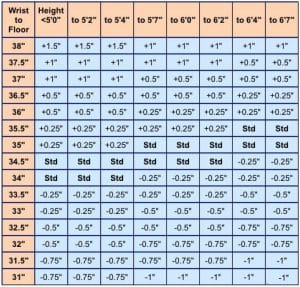The concept of handicap in golf can seem complex at first glance, but once you grasp its fundamentals, it becomes a powerful tool that enhances both fairness and competition in the game. This article aims to provide you with a comprehensive understanding of what a golf handicap is, how it is calculated, and why it plays an essential role in the sport.
What Is a Golf Handicap?
A handicap in golf is essentially a numerical measure of a golfer’s potential ability. This system allows players of different skill levels to compete against each other on a more even playing field. The lower the handicap, the better the golfer. Simply put, it provides a way to adjust each player’s total score to reflect their relative skill level. This adjustment makes it possible for less experienced players to enjoy competitive rounds with more seasoned golfers, without the game feeling one-sided.
Purpose of a Golf Handicap
The primary purpose of a handicap is to level the playing field. In a perfect world, it enables golfers of various skill levels to compete against one another while being able to measure their progress over time. For instance, a novice golfer with a handicap of 24 can fairly compete with a seasoned player whose handicap is 4. Without this system, recreational players might find little incentive to improve, and diverse competitive settings would be less engaging.
Brief History of Golf Handicap
Understanding the origins of the handicap system provides context for how it functions today. The concept was introduced in the late 19th century in the United Kingdom as golf began to proliferate as an everyday sport among various social classes. The idea was to allow diverse social groups the opportunity to play together competitively, by fairly accommodating for differences in experience and proficiency.
Understanding How Handicaps Are Calculated
Achieving a comprehensive understanding of the golf handicap system means diving into its calculation. Initially, this process may seem complicated, but it becomes clearer with familiarity.
Basic Steps of Handicap Calculation
- Record Scores: The first step in calculating a handicap is consistently recording scores in a standardized manner. Each score contributes to the calibration of a player’s handicap index.
- Calculate Adjusted Gross Score (AGS): This step involves adjusting scores to account for equitable stroke control. High scores on any hole are tweaked to reflect a more balanced ability measure.
- Determine Handicap Differential: The difference between a player’s adjusted gross score and the course rating is termed the handicap differential. Multiple differentials are averaged to form a more stable measure.
- Average & Multiply: A typical set of differentials (usually the best 10 of the last 20) is averaged and multiplied by 0.96 to mitigate the impact of outliers in overall performance.
- Apply Course Handicap Formula: The player’s index is adjusted relative to specific courses using the formula:[ \text = (\text \times \frac{\text}) + (\text – \text) ]
By understanding these steps, you gain the ability to actively communicate with other golfers about your performance level with informed confidence.
Components Influencing Handicap Calculation
Several components contribute to how a handicap is calculated, including slope rating, course rating, and course par. All these different factors combine to yield a comprehensive picture of a player’s relative potential.
- Slope Rating: This number reflects the relative difficulty of a course for a “bogey golfer” compared to a scratch golfer (a player with a Handicap Index of 0.0). The standard slope rating is 113.
- Course Rating: This is a value indicating the expected score of a scratch golfer on the course, giving a baseline for comparison when considering a specific player’s abilities.
- Course Par: The expected number of strokes a scratch golfer should need to complete the course is encapsulated in the course par, adjusted based on conditions and relative to the other ratings.
Role of Official Governing Bodies
Organizations such as the United States Golf Association (USGA) and The R&A govern the rules surrounding handicaps. These bodies ensure a globally standardized approach, maintaining uniformity in competition regulation. They offer standardized forms and guidelines, which are fundamental to maintaining competitive fairness.
How to Obtain and Maintain a Handicap
Now that you understand what a handicap is, how do you obtain one, and what is needed to maintain it? A valid handicap not only involves initial calculation but also consistent updates based on play over time.
Registering for a Handicap
To obtain an official handicap, you need to join a golf club that is affiliated with a recognized handicap service provider. Many clubs offer electronic systems where you can log scores and track your handicap over time. Registration typically requires:
- Submission of recent scorecards
- Payment of a registration fee
- Compliance with the club’s standing guidelines
These steps ensure that your handicap reflects an up-to-date, accurate account of your current abilities.
Maintaining Your Handicap
Maintaining a valid handicap requires regular participation and consistent score recording. It necessitates:
- Playing Regularly: Engage in frequent rounds to ensure your handicap fluctuates according to current playing standards.
- Submitting Scores: Logging all scores (both good and bad) ensures accuracy. This honesty is pivotal to relevance.
- Handicap Reviews: Many clubs mandate periodic review jockeying to ensure all records align appropriately with expected performance.
Engaging in this process rewards you with an authentic measure of ability, while also building a longer track record of your golfing potential.
Benefits of Using a Handicap System
Embracing the handicap system in golf offers numerous advantages beyond just leveling playing capabilities. It encompasses recreational and competitive enrichments, strengthening both individual satisfaction and group engagement.
Enhancing Competitiveness
With a well-established handicap system, matches can become more exciting and fulfilling. A player with a firm understanding of their handicap can strategically approach games by benchmarking areas for improvement. Under this system, every golfer—be it a novice, intermediate, or advanced player—gains fair competition opportunities.
Goal Setting and Tracking Improvement
Having a handicap allows golfers to set tangible goals and measure improvement over time. By targeting handicap reduction, players gain pronounced motivation and challenge themselves consistently by setting and redefining personal measurable achievements.
Making New Connections
The handicap system facilitates building connections across player categories by allowing golfers of differing skills to play together competitively. It fosters camaraderie and mentorship opportunities, offering enthusiasts the chance to learn from veteran players while making new friends on the greens.

Common Misconceptions About Golf Handicap
Despite its straightforward objectives, several myths and misconceptions persist about the handicap system. Addressing these misunderstandings promotes clarity amongst all involved in the sport.
Myth 1: Lower Handicaps Always Mean Better Players
While a lower handicap generally signifies advanced skill, it doesn’t inherently mean a player masters all aspects of the game. Often, it reflects proficiency in specific conditions or certain courses. Consistency, course management, and mental strength also play critical roles that aren’t always reflected in the handicap number alone.
Myth 2: Only for Professional Players
Far from being exclusively for elite players, the handicap system serves all levels. Beginners can benefit from understanding how their game stacks up against peers. It encourages trying out different strategies and learning areas to develop diverse techniques.
Myth 3: Handicaps Are Static
Golfers sometimes forget that handicaps continuously evolve with ongoing play. They can result in either upward or downward adjustments—adaptations that reflect the inevitable swings in personal skill levels over time. Dynamic maintenance reinforces how handicaps capture the ebb and flow of a player’s golfing journey.
Strategies for Improving Your Handicap
To enhance your handicap score, you must adopt a strategic path combined with dedication and precision. These systematic approaches can markedly reduce your handicap, leading to better course performance.
Consistent Practice
Success in improving your handicap doesn’t happen overnight; it demands earnest and repeated practice. Allocate time for diverse training routines such as putting, driving, and short game improvement. Regular practice nurtures steady progress, ultimately reducing your handicap score incrementally.
Course Management
Playing smart doesn’t always mean hitting harder. Strategic course management includes analyzing terrain features, selecting appropriate clubs, and plotting blocks rather than always seeking monumental recovery shots. Understanding when to play aggressively or consistently can greatly affect your score.
Mental Toughness
Remaining calm under pressure is crucial for low scores. The mental component ensures that your focus remains undisturbed by errors or external disturbances. Techniques such as deep-breathing exercises, visualization, and positive reinforcement build and maintain this psychological fortitude.

The Future of Handicap Systems
As technology evolves, so too does the handicap system. The advent of digital scoring apps and computing algorithms promises to streamline how handicaps are recorded, calculated, and disseminated.
Digital Innovations
Incorporation of platforms associated with real-time scorekeeping allows immediate handicap updates. Mobile applications dedicated to golf serve as repositories for score history, offering instant statistical visuals and advanced analytics for both personal and competitive refinement.
Global Standardization
Ongoing talks seek to further standardize handicap systems globally. Platforms such as the World Handicap System (WHS) unify organizations, synchronizing handicap determination to ensure universal fairness. Golfers worldwide benefit from comparable and recognizable metrics regardless of national origin.
Conclusion
Grasping the intricacies of the handicap system provides a rich canvas for enhancing your golf experience. This mechanism achieves more than merely leveling the playing field; it acknowledges diverse skill levels while inspiring facilitation and progress in a competitive yet collegiate manner. By immersing yourself in this understanding and actively participating in the practice of golf beyond the amateur tier, you adopt both personal and reconstructive facets associated with sportsmanship and improvement. Integrating handicaps into play not only defines your journey but shines light on golf’s underlying principles of inclusivity, enhancement, and enjoyment, building a cycle of continual encouragement and mastery.




